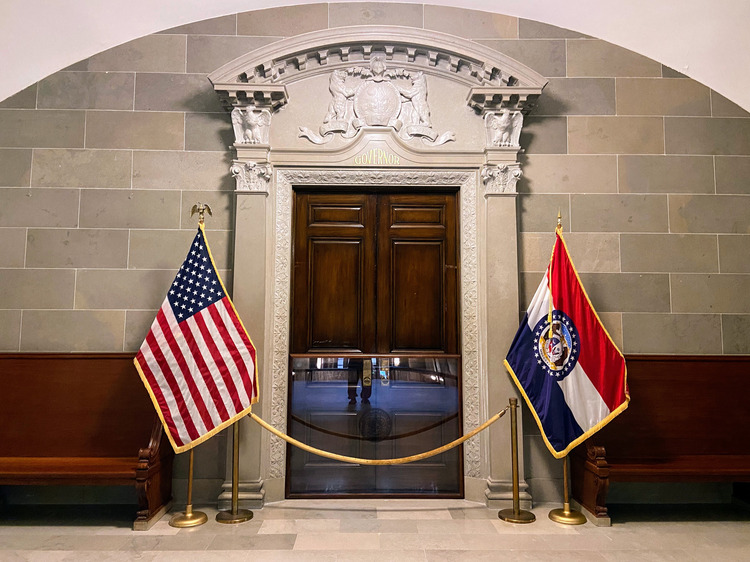
Missouri has played a pivotal role in shaping personal injury and tort law in the United States. Through landmark decisions, the state’s courts have clarified legal standards and established precedents that continue to influence how personal injury cases are litigated today. If you’re navigating the complexities of a personal injury claim, enlisting the expertise of a skilled Kansas City personal injury lawyer from Langdon & Emison can make a significant difference in securing the compensation you deserve.
Here are some famous Missouri court cases that changed the law.
Missouri Pacific Railway v. Humes (1885)
This case impacted personal injury and tort law by upholding the constitutionality of state laws that imposed penalties on corporations for negligence. The case involved a Missouri statute that allowed double damages against railroads for failing to erect fences and cattle guards, which led to injuries or property damage.
The U.S. Supreme Court ruled that the statute didn’t violate the Equal Protection Clause. This decision reinforced the states’ authority to regulate corporate conduct and impose stricter liability to protect public safety, setting a precedent for holding corporations accountable in tort cases involving negligence.
Zumwalt v. Utilities Insurance Co. (1950)
This case helped establish the doctrine of insurance bad faith, which requires insurers to act in good faith and with reasonable care when handling claims. This includes settling within policy limits when reasonable. After a car accident, the plaintiff’s insurer failed to accept a reasonable settlement offer, leaving him personally liable for damages beyond his coverage.
He sued, arguing that the insurer acted in bad faith. The court ruled in his favor, setting a key precedent that insurers must prioritize policyholders’ interests during settlement negotiations or risk liability for damages exceeding policy limits.
Gustafson v. Benda (1983)
This landmark case reshaped personal injury and tort law. The plaintiff, injured in a motorcycle collision while passing cars as the defendant turned left, faced the doctrine of contributory negligence, which barred recovery if a plaintiff was even slightly at fault.
The Missouri Supreme Court abolished this rule, adopting pure comparative fault. Under this system, plaintiffs can recover damages reduced by their percentage of fault, even if they’re more than 50% responsible. The decision ensured a fairer allocation of responsibility and allowed partial compensation for injuries despite shared fault.
Gibson v. Brewer (1997)
The Gibson v. Brewer case had a significant impact on personal injury and tort law, particularly regarding child sexual abuse by clergy. It involved a lawsuit against a religious institution for negligent hiring and supervision of an employee who caused harm.
The Missouri Supreme Court ruled that while the First Amendment protects religious institutions, they aren’t immune from liability for negligence. This decision clarified that organizations, including religious ones, can be held accountable for failing to exercise reasonable care, expanding the scope of personal injury law to emphasize accountability.
Watts v. Lester E. Cox Medical Centers (2012)
This case reshaped Missouri’s medical malpractice landscape by challenging caps on non-economic damages. The plaintiff sued after her newborn suffered severe brain injuries due to alleged medical negligence. While the trial court awarded significant damages, the defendant invoked Missouri’s statutory cap to reduce the award.
The Missouri Supreme Court struck down the cap, ruling it violated the constitutional right to a jury trial. Though the state later enacted a revised cap, Watts v. Lester E. Cox Medical Centers remains a landmark case for patients’ rights and full compensation for non-economic losses.
Coomer v. Kansas City Royals Baseball Corp. (2014)
Known as the “Hot Dog Case,” Coomer v. Kansas City Royals examined the limits of assumption of risk in personal injury claims. The plaintiff was injured when struck in the eye by a hotdog thrown by the team mascot during a promotional event.
The Missouri Supreme Court ruled that being hurt by a hotdog is not inherently a risk associated with attending a baseball game, allowing the Royals to be held liable if found negligent. The decision clarified that sports venues may have a duty to protect spectators from foreseeable risks beyond the game itself.
Why legal representation matters
These landmark cases demonstrate how critical it is for injury victims to have skilled legal representation. Our knowledgeable Kansas City personal injury lawyers can help protect your rights, negotiate fair settlements, and, when necessary, take your case to court to seek justice.
Missouri’s legal system has evolved through decades of precedent-setting rulings, which continue to serve as the foundation for current and future cases. Whether you are dealing with an insurance dispute, workplace injury, or emotional distress claim, understanding your legal rights is the first step toward recovery.
Contact Langdon & Emison today
Each of these cases illustrates Missouri’s evolving nature of personal injury and tort law. If you’ve been injured due to someone else’s negligence, it’s crucial to consult with our experienced Kansas City personal injury attorneys to protect your rights and seek the compensation you deserve.
Our skilled lawyers can help you understand the complexities of personal injury law and fight for the justice you deserve. Contact us today to schedule a free consultation.


